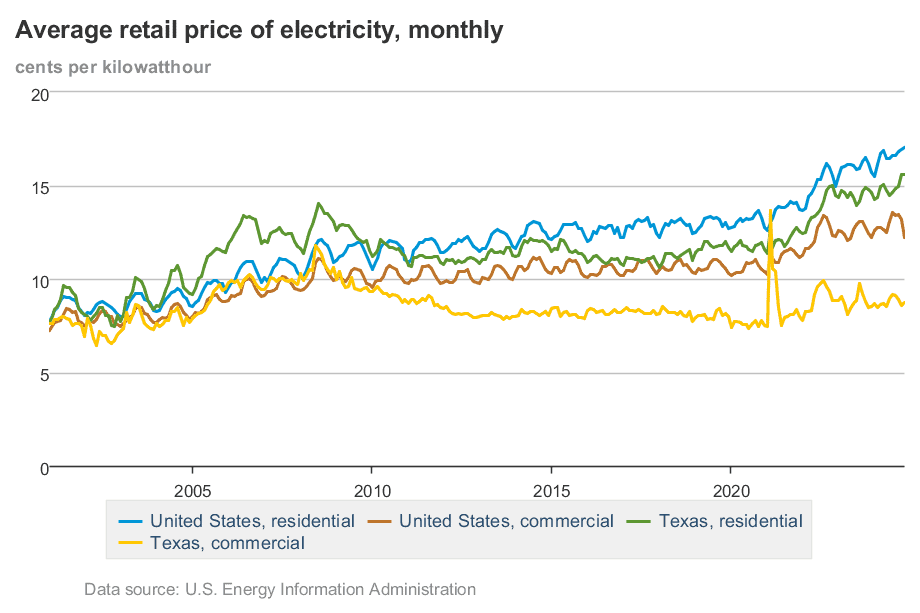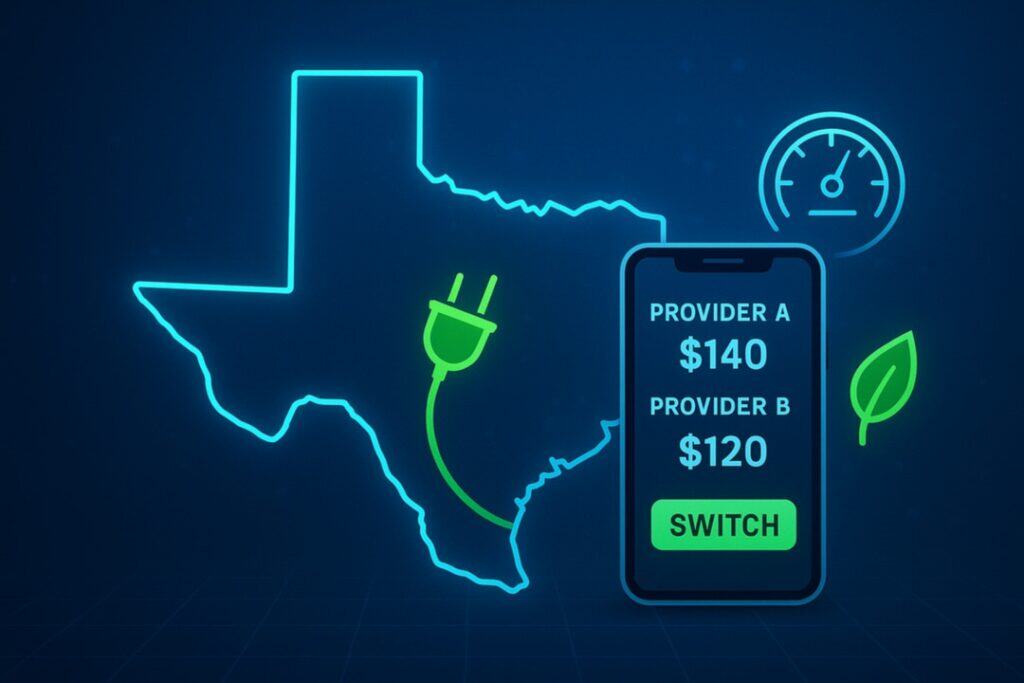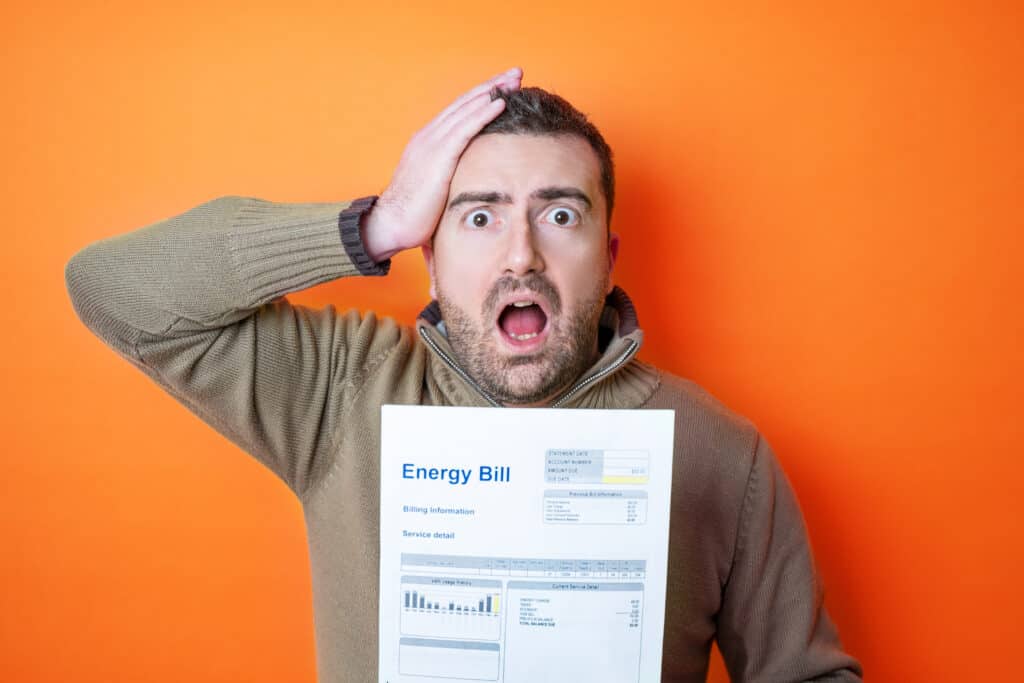Texas Electricity Price Forecast 2025
Wholesale Price Forecast
The U.S. Energy Information Administration (EIA) expects average wholesale electricity prices in Texas (ERCOT North Hub) to decrease to approximately $27–$ 34/MWh in 2025, down from around $35/MWh in 2024. This assumes typical demand and strong solar expansion. Under high-demand scenarios, prices may remain closer to $31–32/MWh.
Forward Strip Prices Are Much Higher
Forward contracts for 2025–2028 are trading above $50/MWh, with summer on-peak months, such as July and August, reaching prices of $110–$165/MWh in some hubs. These higher prices reflect market risk expectations for extreme weather, supply constraints, and demand growth, including data center load growth in the Dallas-Fort Worth area.
Key Takeaways for 2025
- Wholesale Prices Could Drop: EIA’s forecast assumes solar output increases and favorable gas prices.
- Market Pricing Is Risk‑Loaded: Forward strip pricing above $50/MWh reflects hedging against volatility and extreme events.
- Natural Gas Prices Expected to Rise: Fuel costs are forecast to average $3.37/MMBtu, a 24% increase from 2024, which could offset declines in wholesale prices.
- Rapid Demand Growth from Data Centers: Texas added approximately 13 TWh of data center demand between 2019 and 2023. Continued expansion may strain grid capacity and drive forward pricing higher.
- Massive Solar & Storage Build‑Out: Texas plans to add tens of gigawatts of solar and battery capacity; however, project delays or transmission congestion may limit near-term price relief.
Will Texas Electricity Rates Rise or Fall in 2025?
Retail rates will likely remain steady or increase modestly. The deregulated market allows consumers to lock in fixed‑rate plans when prices are favorable. However, supply-side risks and grid upgrades are factors that could push rates higher, particularly during peak demand periods.
What Influences Texas Electricity Prices in 2025?
- Natural Gas Price Volatility – With higher Henry Hub projections, gas-fired generation—often the marginal price setter—could lead to increased wholesale and retail power costs.
- Renewable Energy Expansion – A significant uptick in solar and battery capacity is expected to suppress wholesale prices—especially midday—but reliability for peak events remains an open question.
- Demand from Large-Scale Customers – Data centers and industrial electrification are accelerating load growth. Due to concerns about grid constraints, traders added price risk to forward strips.
- Extreme Weather Risk – ERCOT has identified the potential impact of summer heat and heatwaves on market prices. These conditions can trigger short-term spikes, adding uncertainty to average price predictions.

Forecast vs. Forward Prices Comparison
| Metric | Forecast (EIA) | Market Forward Curve |
|---|---|---|
| Annual Average Wholesale Price | $27–34/MWh | Often $50+; summer peaks $110–165/MWh |
| Basis | “Normal” demand, renewables ramp-up | Risk premium for volatility, demand spikes |
| Purpose | Model average outcome | Price hedging or utilities’ offer prices |
Compare Texas Electricity Prices
Encuentre hoy las tarifas eléctricas más asequibles para los distintos patrones de consumo de energía residencial.

How Texans Can Manage Costs in 2025
- Compare Plans Frequently: Use tools like Compare Power to identify the best fixed-rate plans in your area.
- Consider Locking In Longer Contracts: Lock rates in spring or fall when forward prices may dip slightly.
- Shift Usage to Off-Peak Hours: Reduce charges by using high-use appliances during less expensive off-peak periods.
- Explore Green Energy Options: Plans that incorporate solar or wind energy may provide additional savings and reduce exposure to gas price volatility.
- Stay Informed on Transmission Costs: New grid investments could shift cost burdens—primarily through rate structure changes—facing residential customers unless broader reforms are approved.
Controle sus gastos energéticos
With Texas electricity prices projected to decline in 2025, now is the time to act.
Compare rates, lock in a favorable plan, and implement energy-saving strategies to maximize your savings.
Preguntas frecuentes sobre los precios de la electricidad en Texas
Here are the most frequently asked questions about Texas Electricity Prices.
¿Cuál es el precio medio de la electricidad residencial en Texas?
The average residential electricity price in Texas is 15.49 ¢/kWh, or 11.3% less than the United States average.
Updated August 2025
Source: U.S. Energy Information Administration (EIA)
Will Texas electricity prices go down in 2025?
Wholesale prices are expected to decrease, but retail rates may fluctuate due to changes in demand and market conditions.
What affects Texas electricity prices the most?
Natural gas prices, renewable energy growth, demand from large-scale users, and extreme weather.
Seasonal fluctuations, such as high demand during hot summer months, can cause electricity prices to rise.
¿Cuál es el precio medio de la electricidad para empresas y comercios en Texas?
The average commercial electricity price in Texas is 8.90 ¢/kWh, 31.3 % lower than the United States average.
¿Qué compañía eléctrica tiene los mejores precios en Texas?
En el estado de Texas, hay más de 60 compañías eléctricas minoristas, cada una con docenas de planes de energía disponibles para los consumidores. Sin embargo, el mejor precio de la electricidad para su hogar depende de su consumo de kWh, no de la compañía.
A través de Compare Power, puede explorar planes de energía que se ajusten al historial de consumo de su hogar para encontrar rápidamente el que mejor se adapte a su perfil de consumo de kWh, independientemente del proveedor.
¿En qué se diferencian las empresas de servicios públicos y los proveedores de energía?
Las empresas de servicios públicos son responsables del mantenimiento y funcionamiento de la red energética.
In a power outage, you can depend on them to restore and maintain the power lines and other equipment that deliver energy to your home or business.
Utility companies serving Texas include Oncor Electric Delivery, CenterPoint Energy, AEP Texas, and Texas-New Mexico Power.
¿Qué es ERCOT en Texas?
ERCOT gestiona la mayor parte de la red de Texas, suministrando energía a más de 26 millones de tejanos, y es una organización sin ánimo de lucro. La Legislatura de Texas y la Comisión de Servicios Públicos supervisan el funcionamiento de ERCOT.
¿Por qué mi factura de electricidad es tan alta de repente?
Texas heavily relies on natural gas to generate electricity, with over half of the state’s power being sourced from natural gas.
Unfortunately, economic uncertainty has led to natural gas prices reaching all-time highs, resulting in a steady increase in electricity prices throughout the year.
Retail electricity providers (REPs) purchase electricity in advance based on their predictions of demand. As electricity becomes more expensive, REPs raise prices to ensure that they can maintain their profit margins.
Si su contrato de electricidad ha expirado, may estará pagando una tarifa de permanencia que varía cada mes y es bastante más cara que un contrato de tarifa fija.
Tome el control de sus costes de electricidad utilizando Compare Power. Compre con su código postal para descubrir los mejores planes para su hogar y evitar facturas energéticas elevadas.
What is considered a reasonable electricity rate in Texas?
A reasonable electricity rate in Texas typically ranges from 10¢ to 13¢ per kWh for residential customers. However, rates vary based on location, usage patterns, and market conditions.
The best way to determine a reasonable rate for your situation is to compare offers from multiple providers using a tool like Compare Power.
¿Por qué varían las tarifas eléctricas en Texas?
Las tarifas eléctricas en Texas varían en función del coste del combustible, los cambios estacionales de la demanda, los gastos de transmisión y distribución y los costes operativos del proveedor.
Additionally, Texas has a deregulated energy market, allowing consumers to choose from numerous providers and plans, resulting in a wide range of rates.
Are electricity rates increasing or decreasing in Texas?
Las tarifas eléctricas en Texas pueden fluctuar en función de las condiciones del mercado, el coste del combustible y otros factores.
However, per the U.S. Energy Information Administration’s forecast for 2025, wholesale power prices are expected to decrease due to lower natural gas costs and increased renewable energy generation.
¿Puedo elegir mi proveedor de electricidad en Texas?
Sí, Texas tiene un mercado energético desregulado, lo que significa que los consumidores pueden elegir su proveedor de electricidad entre varias opciones.
You can compare different providers and plans to find the one that best suits your needs.
When is the best time to lock in a rate?
During periods of low demand, such as spring or fall, prices tend to be lower.
How do Texas electricity prices compare to those in other states?
Los precios de la electricidad en Texas suelen ser más bajos que la media nacional.
As of August 2025, the average residential rate in Texas was 15.49 ¢/kWh, or 11.3% less than the United States average.
This is primarily due to Texas’ deregulated electricity market, which fosters competition among providers, and the state’s diverse energy mix, including substantial wind power generation.
How can I find the best electricity plan in Texas?
Compare providers regularly and monitor the market for price drops.
Todos los nombres de productos o empresas, marcas o logotipos que aparecen en esta página son propiedad de sus respectivos dueños. Compare Power es un mercado independiente no afiliado. Obtenga información imparcial y precisa respaldada por nuestro compromiso con la integridad editorial.
Our Texas-based energy experts are here to help:
Live Chat (bottom right, Mon-Fri: 8:30 AM – 6:30 PM)
Call 855-441-3030 (Mon-Fri: 8:30 AM – 6:30 PM Sat: 9 AM – 4:30 PM)
Email [email protected]









